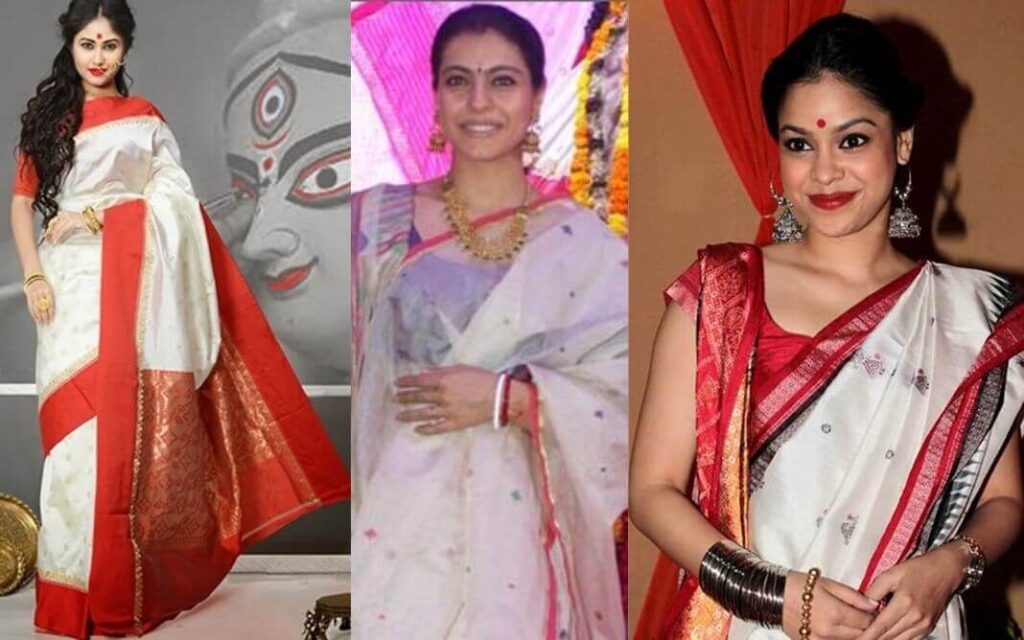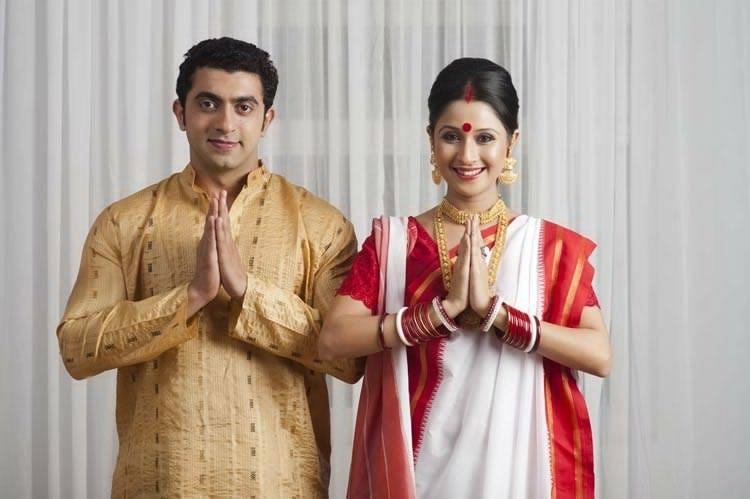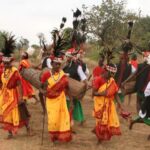West Bengal, a vibrant state in eastern India, is renowned for its rich cultural heritage, which includes its unique cuisine, music, literature, and visual arts. Among its most distinctive features is its traditional attire, which plays a significant role in the state’s cultural identity. The traditional dress of West Bengal is not only a reflection of the region’s history but also an embodiment of its diverse and dynamic cultural ethos. In this article, we explore the various traditional dresses worn by both men and women in West Bengal, highlighting their significance and unique characteristics.
Traditional Dress of Bengali Women

Sarees
Sarees are quintessential to the traditional dress of Bengali women. They are characterized by their distinctive draping style, which sets them apart from sarees worn in other states. The saree is an integral part of Bengali culture, and various types of sarees are worn on different occasions:
Korial and Garad Sarees
Garad sarees are classic Bengali sarees typically in white with deep red borders. These sarees hold religious significance and are especially popular during Durga Puja celebrations, weddings, and other ceremonial events. The traditional Garad saree is often complemented with ivory or conch shell jewelry and red bangles, symbolizing purity and grace.
Tant Sarees
The name “Tant” is derived from the loom on which these sarees are woven. Tant sarees are lightweight and ideal for the hot and humid climate of West Bengal. They are known for their intricate designs, including special motifs and floral patterns along thick borders. Tant sarees are cherished for their comfort and elegance.
Dhakai Jamdani
Originating from Dhaka, the Dhakai Jamdani saree is known for its exquisite craftsmanship. It features delicate floral patterns woven with silver and gold threads. The time-consuming process involved in creating these sarees makes them quite expensive. Their intricate designs and fine quality make them a sought-after choice for special occasions.
Tussar and Kantha Silks
The Malda district in Bengal is famous for its tussar silk sarees, which are noted for their texture and vibrant colors. Tussar sarees have a distinctive golden sheen and are adorned with traditional and contemporary motifs on the pallu. Kantha sarees, on the other hand, are characterized by running stitches on bright hues, blending heavy and lightweight elements in their designs.
Muslin Cotton and Murshidabad Silks
Muslin cotton sarees are known for their sheer quality and soft pastel colors, providing a simple yet elegant look. Murshidabad silks are another traditional fabric, known for their fine quality and bright colors, often featuring traditional batik and block patterns.
Baluchari Sarees
Baluchari sarees are renowned for their luxurious silk fabric and golden embroidery. These sarees are intricately woven with motifs from Indian mythology and are also known as Swarana sarees due to their bright golden borders. The unpleated pallus of Baluchari sarees are particularly striking, showcasing the elaborate designs and patterns.
Kurta and Salwar with Adorable Dupattas
Traditional kurtas and salwars are often paired with colorful dupattas adorned with motifs, embroidery, and exotic patterns. Bengali women frequently wear their kurtas and salwars with beautiful, lush cotton or silk dupattas, adding a touch of elegance to their attire.
Traditional Dress of Men in West Bengal
Panjabi Dhoti
For Bengali men, the panjabi dhoti is a traditional outfit that resembles the kurta and dhoti combination worn in other parts of India. However, Bengali panjabi dhotis are distinct in their use of fabrics such as Muga silk, Tussar silk, and cotton silk. In contemporary fashion, panjabi dhotis are often paired with jeans or trousers. Garad silk kurtas, in shades like beige, cream, and honey, are popular choices for formal occasions.
Kurta Pajama
The kurta pajama is a staple of traditional male attire in West Bengal. Kurtas are long, loose garments worn over trousers (pajamas), made from fabrics such as silk or cotton. This combination is considered everyday wear and is appreciated for its comfort and style.
Lungi (Dhotis)
Similar to the dhotis worn in South India, Bengalis also don a lungi. This garment consists of a long piece of white cloth draped around the waist and tucked at the lower back. The lungi is a versatile and comfortable piece of clothing, commonly worn in casual settings.
Conclusion
The traditional dress of West Bengal vividly illustrates the state’s rich cultural tapestry. From the elegant and intricate Dhakai Jamdani sarees to the comfortable and practical Panjabi dhotis, the traditional clothing of West Bengal showcases a blend of historical significance and contemporary relevance. Bengali attire, with its diverse fabrics, patterns, and styles, not only reflects the region’s heritage but also plays a vital role in its cultural celebrations and daily life. The traditional dress of West Bengal remains a testament to the state’s vibrant cultural identity and enduring traditions.


